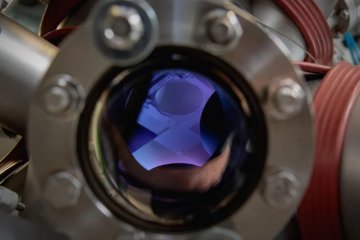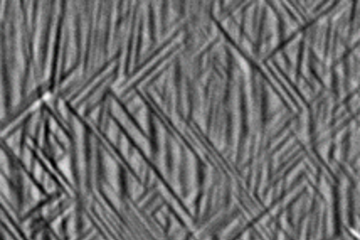All genres
2381.
Thesis - PhD
Damage nucleation in DP-steels: experimental characterization of the contributing microstructural parameters. Dissertation, Fakultät für Georessourcen und Materialtechnik, RWTH Aachen (2018)
2382.
Thesis - PhD
Nano-scale investigation of the degradation mechanism of multilayer protective coating for precision glass molding. Dissertation, RWTH Aachen, Aachen, Germany (2018)
2383.
Thesis - PhD
Synthese und Eigenschaften flexibler Resorcin-Formaldehyd- und Kohlenstoffaerogele. Dissertation, RWTH Aachen, Aachen, Germany (2018)
2384.
Thesis - PhD
Deformation mechanisms and the role of interfaces in face-centered cubic Fe-Mn-C micro-pillars. Dissertation, RWTH Aachen, Aachen, Germany (2018)
2385.
Thesis - PhD
An investigation of hydrogen/microstructure interaction in complex nickel-based alloys: Multi-scale detection and embrittlement mechanisms. Dissertation, RWTH Aachen, Aachen, Germany (2017)
2386.
Thesis - PhD
Element redistribution and defect formation at the CdS/CIGS interface. Dissertation, RWTH Aachen, Aachen, Germany (2017)
2387.
Thesis - PhD
Influence of strain path changes during cup drawing on the twinning activity in TWIP steels investigated by ECCI. Dissertation, RWTH Aachen, Aachen, Germany (2017)
2388.
Thesis - PhD
Investigation of deformation mechanisms in magnesium crystals. Dissertation, RWTH Aachen, Aachen, Germany (2017)
2389.
Thesis - PhD
On the design of alloys and synthesis for composite steels. Dissertation, RWTH Aachen, Aachen, Germany (2017)
2390.
Thesis - PhD
Fundamentals of ferrous low-carbon lath martensite: from the as-quenched, to tempered and deformed states. Dissertation, RWTH Aachen, Aachen, Germany (2017)
2391.
Thesis - PhD
A Study on the Microstructure Formation Mechanisms and Functional Properties of CdTe Thin Film Solar Cells Using Correlative Electron Microscopy and Atomistic Simulations. Dissertation, RWTH Aachen, Aachen, Germany (2017)
2392.
Thesis - PhD
Grain boundary segregation in multicrystalline Silicon studied by correlative microscopy. Dissertation, RWTH Aachen, Aachen, Germany (2017)
2393.
Thesis - PhD
κ-carbide in a high-Mn light-weight steel: precipitation, off-stoichiometry and deformation. Dissertation, RWTH Aachen, Aachen, Germany (2017)
2394.
Thesis - PhD
Die Übertragung von mikrostrukturellen Eigenschaften aus der diskreten Versetzungsdynamik in Kontinuumsbeschreibungen. Dissertation, KIT, Karlsruhe, Karlsruhe, Germany (2017)
2395.
Thesis - PhD
Assessment of Co-free hardfacing stainless steel alloys for nuclear applications. Dissertation, University Manchester, Manchester, UK (2017)
2396.
Thesis - PhD
Mechanical properties in metallic glasses and their deformation mechanisms. Dissertation, RWTH Aachen, Aachen, Germany (2016)
2397.
Thesis - PhD
Elementary deformation processes during low temperature and high stress creep of Ni-base single crystal superalloys. Dissertation, Ruhr-University Bochum, Bochum, Germany (2016)
2398.
Thesis - PhD
Experimental-theoretical study of the interplay between deformation mechanisms and secondary phases in metastable β titanium alloys. Dissertation, RWTH Aachen, Aachen, Germany (2016)
2399.
Thesis - PhD
On the strain hardening mechanisms of a high-Mn lightweight steel. Dissertation, RWTH Aachen, Aachen, Germany (2016)
2400.
Thesis - PhD
Martensitic Stainless Steel: Evolution of Austenite during Low Temperature Annealing and Design of Press Hardening Alloys. Dissertation, RWTH Aachen, Aachen, Germany (2016)











